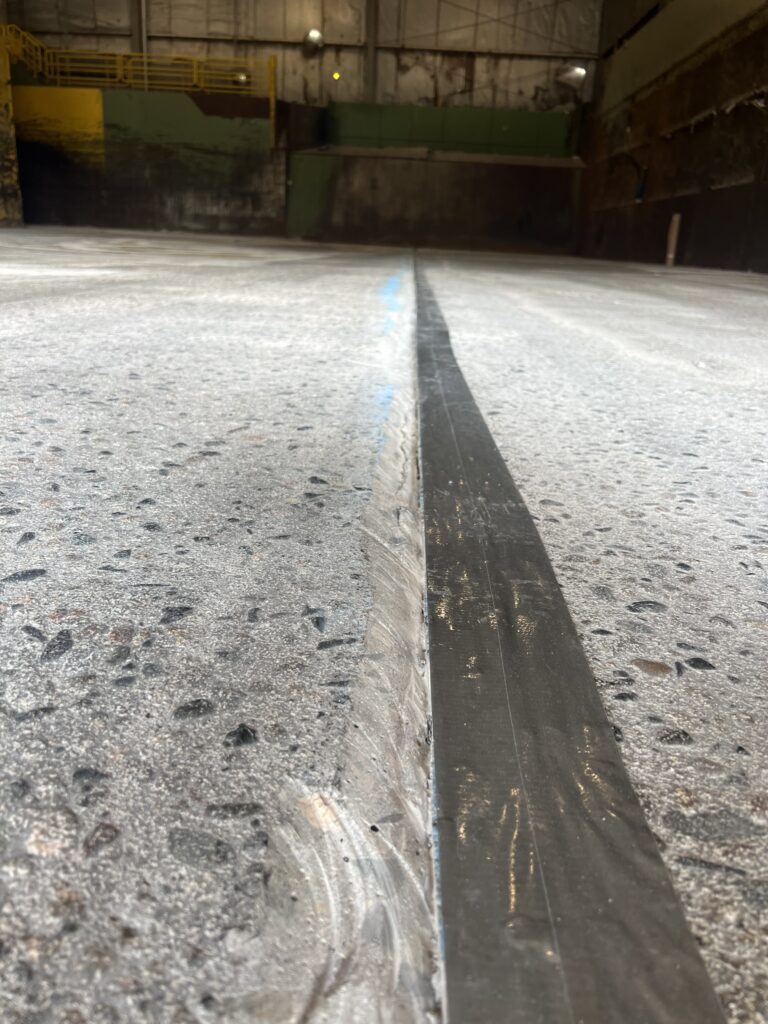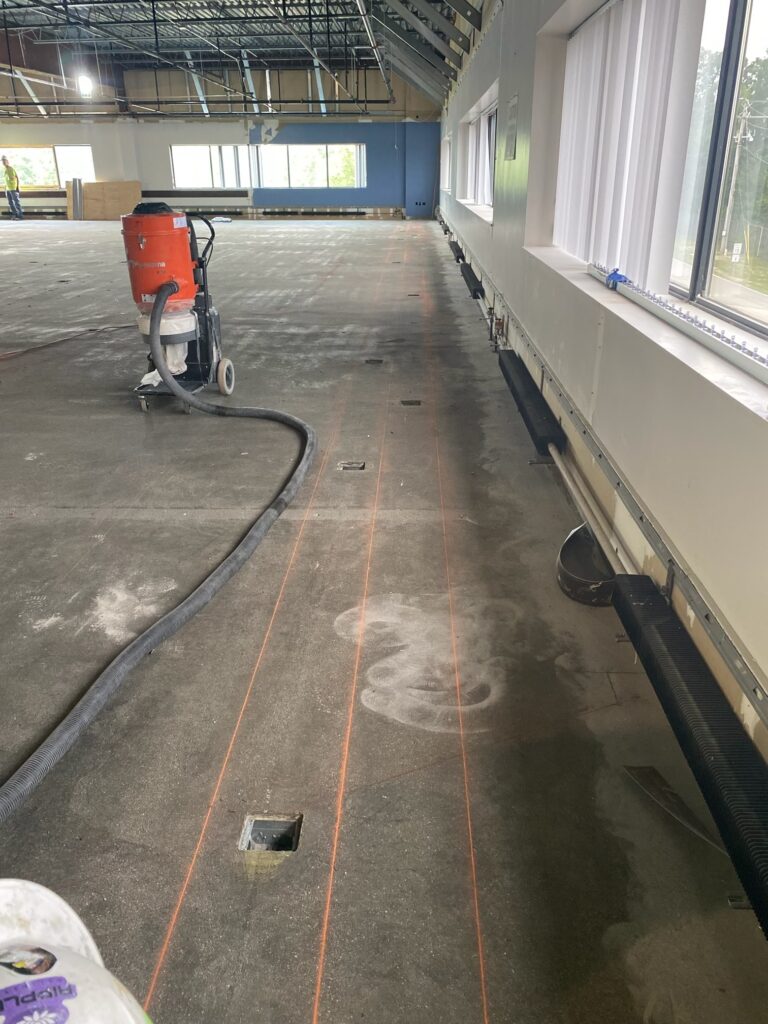Concrete floors are the foundation of countless industrial and commercial spaces, providing the strength and durability needed to support heavy machinery, foot traffic, and continuous operations. However, even the strongest concrete floors can become compromised over time due to wear and tear, leading to safety hazards, operational inefficiencies, and costly repairs. One critical process that can prevent these issues and extend the lifespan of your concrete surfaces is floor stabilization.
In this blog post, we’ll explore the importance of floor stabilization, common problems like curled slabs and control joint damage caused by forklifts, and how proactive maintenance can protect your investment.
Why Concrete Floors Become Unstable
Concrete is designed to be long-lasting, but it’s not immune to damage. Over time, several factors can lead to an unstable or uneven floor surface:
Curling of Concrete Slabs: One of the most common issues faced by concrete floors is slab curling. This phenomenon occurs when the edges or corners of a slab lift upwards, typically due to uneven moisture or temperature distribution. As the top of the slab dries and shrinks faster than the bottom, the resulting upward bend can cause an uneven surface. This not only compromises the structural integrity of the floor but can also lead to trip hazards and difficulty in moving equipment across the floor.
- Control Joint Damage: Control joints are placed in concrete floors to manage cracking and allow for controlled expansion and contraction of the concrete as it settles or undergoes temperature changes. However, these joints are often the first to become damaged, especially in facilities where heavy machinery like forklifts operate regularly. The repeated stress from the constant movement of heavy loads over these joints can break them down, creating gaps, uneven surfaces, and potential safety concerns.
- Load Stress and Traffic: Over time, continuous heavy loads and traffic, especially in warehouse or manufacturing environments, can cause even the best-laid floors to settle unevenly or develop cracks. When left unchecked, this can escalate, leading to deeper cracks and uneven surfaces that require significant repair or replacement.

The Role of Floor Stabilization
Floor stabilization is a process that addresses the underlying issues that cause concrete floors to become uneven or damaged. By injecting stabilizing materials beneath the slab or utilizing other techniques to fill voids and strengthen the foundation, floor stabilization restores the integrity of the surface.
Key benefits of floor stabilization include:
- Prevention of Further Damage: Addressing slab curling and voids beneath the concrete can prevent these problems from worsening, saving money on more extensive repairs down the road.
- Smoother Operations: A stabilized floor eliminates uneven surfaces that disrupt the movement of machinery, especially forklifts. This leads to increased productivity, as equipment can operate smoothly without the risk of damaging goods or equipment.
- Enhanced Safety: Uneven floors can pose serious safety risks for employees, particularly in high-traffic areas. Stabilization eliminates trip hazards and creates a safer working environment.
- Extended Lifespan: Concrete floors are a significant investment, and stabilization helps maximize their lifespan. By addressing underlying issues early on, you can extend the functional life of your floors and avoid the need for full replacements.
How to Mitigate Concrete Floor Issues
To ensure your concrete floor remains stable and durable over time, proactive maintenance and mitigation strategies are essential. Below are some key steps you can take to prevent damage and extend the life of your concrete floors:
- Control Moisture Levels: Since slab curling is often caused by uneven moisture distribution, it’s essential to control moisture exposure during the curing process and throughout the floor’s lifespan. Using vapor barriers, proper sealing, and drainage systems can help minimize moisture intrusion and keep the floor stable.
- Proper Joint Spacing and Filling: To manage cracking, ensure that control joints are appropriately spaced and maintained. Filling joints with flexible materials like polyurethane can reduce stress on the floor as it expands and contracts, preventing cracks from spreading.
- Load Distribution Planning: If your facility uses heavy machinery or experiences constant traffic, planning how loads are distributed can help protect the concrete. Spreading loads evenly, avoiding concentrated pressure points, and employing load-distribution plates or other devices can help mitigate stress on the floor.
- Routine Inspections: Regular inspections of your concrete floors can help catch early signs of damage. Look for small cracks, unevenness, or areas that appear to be sinking. Addressing these issues promptly can prevent more significant damage in the future.
How to Stabilize a Concrete Floor
When issues like curling slabs or voids have already occurred, floor stabilization is a vital process for restoring the structural integrity of the surface. Here are some common methods for stabilizing a concrete floor:
- Slab Jacking: Slab jacking, also known as mudjacking, involves injecting a cement-based grout under the slab to fill any voids and lift the concrete back to its original position. This method is particularly useful for correcting settling issues or sunken slabs.
- Polyurethane Injection: This is a more modern alternative to slab jacking, where lightweight polyurethane foam is injected beneath the concrete to fill voids and lift the slab. Polyurethane foam expands and hardens quickly, providing a stable foundation and minimizing downtime during repairs.
- Concrete Resurfacing: If the damage is limited to the surface level, resurfacing may be a practical option. This involves applying a new layer of concrete or other resurfacing material to restore a smooth, even surface without completely replacing the slab.
- Reinforcement with Fiber Materials: In some cases, reinforcing the floor with fiber materials, such as steel or polypropylene fibers, can increase the tensile strength of the concrete and prevent future cracking. Fiber reinforcement can be used in conjunction with other stabilization methods for long-lasting results.
- Grouting: Grouting is used to stabilize areas beneath the concrete slab by injecting a cementitious material into the voids to support and lift the slab back into place. This method is effective for larger areas with significant voids beneath the surface.

Conclusion
Floor stabilization is a crucial aspect of maintaining the longevity, safety, and functionality of concrete floors in industrial and commercial settings. By understanding the common causes of instability, such as slab curling and settling, and implementing proactive mitigation measures, you can avoid costly repairs and downtime. If your concrete floors are already showing signs of wear, stabilizing techniques like slab jacking, polyurethane injection, and resurfacing can restore your floor’s integrity and keep your operations running smoothly.
By taking action to stabilize your floors now, you’ll protect your investment and ensure a safe, efficient environment for your employees and equipment.
Contact ICS for Your Floor Stabilization Needs
ICS has been in the floor coating and polishing business since 1993. Today, we are a leading concrete flooring company based in New England that serves industrial and commercial clients from various fields.
Our team of experienced flooring professionals has the experience and knowledge required to get the best results. Whether you are a general contractor, public company, or private enterprise, ICS can create and install high-quality concrete floor finishes that meet your exact specifications.
Are you ready to get started on a unique, durable, customizable concrete coating solution for your flooring? Contact us today to schedule a free consultation.
